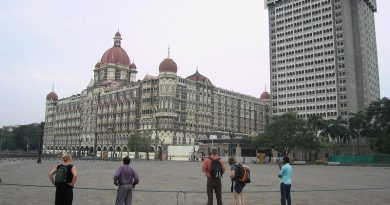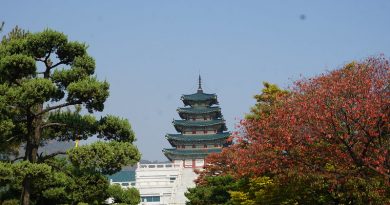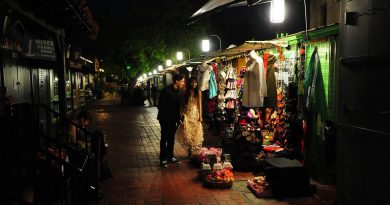The natural wonders of Socotra
The island of Socotra. Is the size of New York’s Long Island, . It lies like a big pair of puckered lips, 510km / 316 miles off the mainland, closer to the shores of Somalia than to the Yemeni mainland.
Soqotra has been described as the ‘Galapagos of the Indian Ocean’ because of its large number of endemic plants and creatures, but compared to is counterpart in the Pacific, the island only receives about 400 visitors a year*.
Up until recently, Socotra was cut off for 5 months of the year due to the high winds and seas of the monsoon season. It’s this inaccessibility that has helped to preserve the island way of life that has existed for millennia. The population is just 40,000, mainly fishermen and herders who speak an ancient, unwritten Semitic language
In 2002 an airport was built and now there are 2 or 3 flights a week throughout the year. The journey takes about 3 hours.
The Dragon’s Blood Tree
Islands represent a small part of the Earth’s land area but a large part of its biodiversity, including about one-sixth of the total flora, so they are critical to global conservation. With more than a third of the 800 or so plant species of Socotra being endemic, found nowhere else on Earth; only Hawaii and the Galapagos Islands have more impressive numbers.
Until at least 10 million years ago Socotra was part of the African mainland. Today the ancestors of plants from these ancient landmasses can still be found growing on the island. The most strikingly, primitive plant and what the island has become synonymous with, is the dragon’s blood tree.
Thr Socotra Conservation Project, is trying to document the vast array of unknown species on Socotra, while protecting the known species from depletion.
Of the 850 plant species on Socotra, over a third, including the dragons blood tree, are unique.
52 of Socotra’s endemic plants are included on the IUCN Red List of Threatened Species., including the dragon’s blood tree .
Recent years have seen a troubling decline in the tree numbers. Although many older examples are present on the island (they can grown for 300 years or more), the younger generation is all but absent with saplings found growing only on cliff sides and in the most inaccessible highlands. The entire species may well be headed for extinction.
Legend has it that the dragon’s tree sprung up from congealed blood shed by a dragon and an elephant as they fought to the death. This liquid was once much prized by Roman soldiers and gladiators as an ointment for disinfecting battle wounds.
The dragon’s trees were born 65 million years ago on the supercontinent Gondwana. After Gondwana split forming the Persian Gulf and most of the land masses in the Southern Hemisphere, the trees thrived from the Mediterranean to the Middle East.
Its deep red liquid, often called dragon’s blood or gum dragon exudes from its bark when scratched. Socotrans used it as pigment for paint, for treating dysentery and burns, fastening loose teeth, enhancing the colour of precious stones and staining glass, marble and the source of resin used in laqours and varnishes – reputedly even the varnish Stradivarius used for his violins.
Modern day uses for dragon’s blood include it’s use by local craftsmen to decorate pots and incense burners. Socotrans use it to cure stomach problems, dye wool, glue pottery, freshen breath and even as lipstick. It’s also used as Rust treatment paint on the locals cars.
Into the Mountains
In the granite ranges of the Hagghier Mountains – 1500 metres high – you can find more bizarre, endemic trees – such as the Socotran fig and the desert rose.These are the prime exhibits in Socotra’s botanical freak show!
Socotra sports examples of gigantism – a curious phenomenon of island evolution. Until 10 million years ago, when the island was still part of Africa, any broad-trunked trees would have been destroyed by large herbivores like elephants and rhinoceroses. When Socotra broke away the absence of such herbivores left a new ecological niche into which herbs and shrubs could grow, and grow.
The most startling example of gigantism is the cucumber tree, up to 4 metres high with a bottle-shaped trunk and cucumbers hanging from its branches.
The high mountain peaks are where the only stable tree populations can be found, as they’re inaccessible even to goats.
FRANKINCENSE FOREST
The ancient Egyptians, who believed frankincense helped spirits to reach the afterlife, are thought to have travelled to Socotra 4,000 years ago to farm the trees that to them would have been more valuable than gold is to us today. Ancient Egyptian inscriptions mention Terraces of Incense and there are a number on the island, dusty and forgotten, their origin and purpose unknown to Socotrans.
Even though Yemen is well known for the caravans that travelled across her deserts on the incense route, most of the frankincense and myrhh actually came from modern day Oman. Now both frankincense and myrhh as all but died out on the mainland. But Socotra is home to 9 species of frankincense tree – all unique to the island.
PEOPLE & THE ANCIENT WAY OF LIFE
Without an influx of people and technologies the Socotrans have had to use and protect their natural resources. They live by fishing, herding livestock, date cultivation and gathering plant products – a lifestyle that has changed little since the first settlers arrived over 2000 years ago.
With very little in the way of modern building materials and medicines, wild plant products are crucial to the survival of the Socotran people.
The ingenuity of the islanders enables them to produce all sort of necessities from the vegetation that grows around them: medicines for people and livestock, glues, tinders, fertilisers, insecticides, cordage, house goods and even tubing for extracting scarce water from deep holes.
Only recently, have there been proper roads built around the island. This road is concern to both the local people and the conservationists.
Villagers have developed a system for preventing over-exploitation of the island flora.
These rules are enforced by a network of tribal elders who control, for example, the cutting of live trees and shrubs. The tribal elders also ensure that livestock are moved from one area to another to prevent overgrazing
The villagers often build houses of rough-hewn stone blocks plugging cave entrances in the hillsides, offering respite from the high summer temperatures and monsoon winds.
Until 1990, the island had a barter-only economy
The ancient language here is unique to the island and related to some of the oldest of the Near East
Socotri describes 24 months in its calendar, each roughly 13 days long, including the Month of the Cow’s Breath, when heavy winds turn the sea to foam, and the Month of Crabs, when ghost crabs crowd the beaches by the thousands.
Socotri has no written form and still has no words for things that are not found on the island so to describe a dog or an aeroplane, Socotrans have to borrow from Arabic
Thr people of the coastal communities typify the people of the Indian ocean crossroads with many being the descendents of the former slave population, or of shipwrecked / deserting seamen. The inhabitants of the interior are more diffuse, separate and secretive – except for a few of the men folk who trade in the town they have no other contacts.




